|

On eBay Now...
Vietnamese Traditional Brass Dining Tray Cultural Heritage Crafted ĐẠI BÁI Arts For Sale

When you click on links to various merchants on this site and make a purchase, this can result in this site earning a commission. Affiliate programs and affiliations include, but are not limited to, the eBay Partner Network.

Vietnamese Traditional Brass Dining Tray Cultural Heritage Crafted ĐẠI BÁI Arts:
$249.00
This brass dining tray is intricately crafted by skilledartisans from the village of Dai Bai, Vietnam. Product Description: This brass dining tray is used for family meals or for arrangingceremonial offerings to ancestors. Dimensions: Diameterranges from 56cm to 57cm, weight varies from 2.3kg to 2.5kg. Made of pure brass, handcrafted. The brass tray is anindispensable item in every Vietnamese household, serving purposes such asdining, arranging ceremonial offerings, and other essential household tasks.The image of the brass tray has deeply embedded itself in the minds of theVietnamese people, becoming a familiar item regardless of location oroccupation. Thetray - a symbol of Vietnamese cultural tradition The tray is used to arrange and serve food in Vietnamese familymeals. It is a distinctive feature of traditional culture, carrying significantspiritual meanings. Unlike in European culture where meals are typically served andeaten at the table, Vietnamese dining arrangements are more flexible, withmeals served on tables, low stools, trays, beds, or even directly on the floor.All dishes are arranged on a tray to facilitate family gatherings andenjoyment. For Vietnamese people, the tray is used to serve daily meals(known as "mam com"), to display food during special occasions(rituals, weddings, etc., known as "mam co"), or for offering food toancestors (known as "mam co cung"). The term "mam" is usedas a unit of measurement for the scale of a feast or gathering. In the past, trays used for family meals were made of bamboo orwood. In wealthier households, brass trays were preferred for their elegance.Today, aluminum or brass trays are more commonly used. Regardless of thematerial, the tray holds a significant place in Vietnamese cultural and familylife. My family owns a brass tray with a crab-eye motif, a weddinggift from my grandmother to my parents. My mother only uses this tray forceremonial occasions such as festivals, Tet (Lunar New Year), or importantancestral rituals, while opting for an aluminum tray for daily meals. As a child, I wondered why my mother chose to use the brass trayinstead of placing offerings directly on the altar or a table. She explainedthat using the tray is a gesture of respect and reverence. "Our ancestorstaught us to place offerings on trays and dishes," she said. I still remember the summer meals on our brass tray: crispyfried peanuts, pickled eggplant, fresh boiled water spinach with fermentedshrimp paste, vinegar chili dipping sauce, and a traditional village-style dishlike braised snails with banana blossoms or caramelized pork and fish. No matter how scorching the sun or how sweltering the day, thesight of the brass tray on the bed always brings a sense of coolness to myheart. It fosters a deep sense of familial love and bonding. Clearly, while seemingly simple, the brass tray is deeplyintertwined with the lives of Vietnamese families. Yet, sadly, many householdsno longer use trays, opting instead to serve meals directly on tables. Thesignificance of the dining tray is fading away, leaving behind a cultural void.Thus, for younger generations, the meanings of traditional sayings and proverbsreferencing the dining tray, such as "Moldy chopsticks and red lacqueredtray" or "Two of us are as close as two chopsticks lying in a goldentray," are becoming increasingly unfamiliar—a loss we deeply regret. Mâm bằng đồng mâm ăncơm bằng đồng hun giả cổ nét đẹp văn hóa của người Việt Nam. Mâm đồng được gòchế tác thủ công bởi nghệ nhân làng nghề Đại Bái Việt Nam. MÔ TẢ SẢN PHẨM :Với người Việt, mâm dùng để bày thức ăn trongcác bữa ăn hằng ngày gọi là mâm cơm; bày thức ăn tại các bữa tiệc (cúng,cưới...) gọi là mâm cỗ; bày đồ ăn để cúng gọi là mâm cỗ cúng... Lúc này, “mâm”được dùng làm đơn vị đo quy mô của bữa tiệc, quy mô của đám. Ngày xưa, chiếc mâm dọn cơm của các gia đìnhlà mâm tre, mâm gỗ. Ở những nhà nghèo, chiếcmâm có thể là cái mẹt. Rồimâm tròn bằng gỗ xuất hiện, thường làm bằng gỗ mít. Những nhà khá giả khôngdùng mâm gỗ mộc mà dùng mâm son (mâm sơn đỏ) hoặc sang trọng thì dùng mâm đồng. Tuy nhiên, hầu hết nhà bình dân vẫn dùng mâmgỗ, sau này dùng mâm nhôm hoặc mâm đồng. Khi bắt đầu hoặc khi kết thúc bữa ăngia đình, mọi người thường nghe lời người lớn nhắc nhở: “Dọn mâm ra đi con!”hoặc: “Xong rồi, bưng mâm đi con!”. Cái mâm được nhắc đến quen thuộc đến nỗi nóthay thế cho một bữa ăn trong cách gọi. Việc ăn chung mâm cũng là cách tinh tế để mỗingười trong gia đình hiểu khẩu vị của nhau mà tôn trọng nhau hơn (người thíchmón này, người thích món kia, sao cho trân trọng mà không trịch thượng, bắt bẻhay đòi hỏi). Ngồi mâm cơm, bố mẹ rèn con ngay từ nhỏ, đủ đểbiết khi chấm bát nước chấm chung không bao giờ được chạm đầu đũa riêng củamình vào, không chấm miếng đã cắn dở, không voọc đũa vào đĩa xào, gắp khéo léohoặc có thìa xúc chung... Khi nhà có người đi vắng chưa kịp về dùng bữa,cơm canh, thức ăn cũng phải dọn ra mâm, để trên bàn và đậy lồng bàn cẩn thận.Rõ ràng, hình ảnh mâm cơm phản ánh phần nào sự sang giàu, nghèo hèn và thể hiệnđược nét văn hóa trong đời sống của mỗi gia đình. Nhà tôi có một chiếc mâm đồng màu mắt cua. Đólà quà cưới của bà ngoại tặng bố mẹ. Mẹ chỉ dùng chiếc mâm này để bày cỗ cúngngày lễ, Tết hay có đám giỗ cho trịnh trọng, còn trong bữa ăn hằng ngày thìdùng mâm nhôm. Ngày bé, tôi thắc mắc sao mẹ không bày cỗ lênmặt tủ thờ, hay mặt phản mà phải để trên mâm đồng thì được mẹ giảng giải đó làsự bày tỏ lòng tôn kính. “Các cụ dạy phải lên mâm, lên bát nên cỗ dứt khoátphải được bày vào mâm”,mẹ nói. Nắng có gắt đến mấy, ngày có oi đến đâu thìhình ảnh mâm cơm đạm bạc được đặt ngay trên giường khi nào nghĩ tới cũng thấymát lòng. Nó khiến tình cảm gia đình thân thương và gắn bó sâu đậm. Rõ ràng, chiếc mâm tuy giản dị nhưng gắn bó vôcùng mật thiết với đời sống của mỗi gia đình. Ấy vậy mà bây giờ,nhiều giađình không còn dùng mâm nữa. Bữa ăn được bày biện ngay trên bàn. Mâm cơm dườngnhư chỉ còn là khái niệm. Vì thế mà với con trẻ, ý nghĩa của các câu tục ngữ, cadao có hình ảnh cái mâm như: “Đũa mốc mà chòi mâm son” hay “Đôi ta làm bạnthong dong/Như đôi đũa ngọc nằm trong mâm vàng”... trở nên xa lạ. Điều này thậtđáng tiếc!

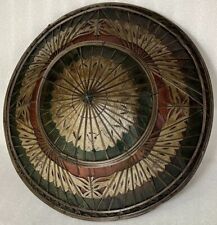
Vietnamese Non La Hat Asian Bamboo SunShade Rice Farmer Handmade Traditional VTG $51.99
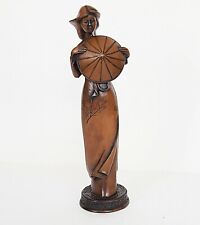
Vietnamese Woman Traditional Clothing Vintage Ceramic Sculpture Figurine $120.00

Vietnamese Traditional Art Enamel Painting on Wood Vietnam Airlines Man Woman $24.95
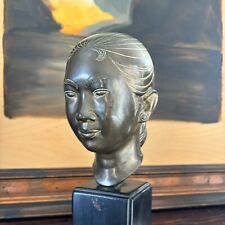
Vietnamese Woman In Traditional Dress Vintage Sculpture Figurine $150.00
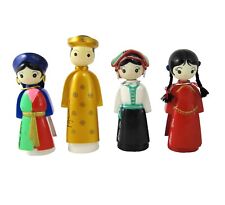
Traditional Vietnamese Women Figurines Set of 4 Gom Viet Hand Painted Poly Resin $29.95
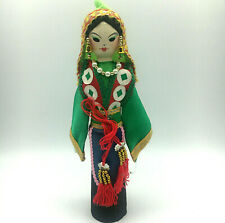
Plaster/Wooden Vietnamese Woman Traditional Clothes Ha Nhi Ethnic 10" $18.71
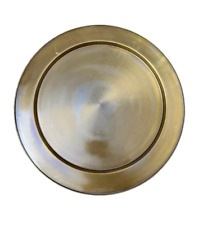
Vietnamese Traditional Brass Dining Tray Cultural Heritage Crafted ĐẠI BÁI Arts $249.00
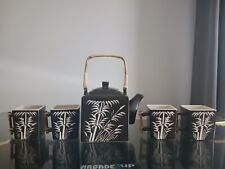
Vintage Traditional Vietnamese Teapot. Bamboo Design, Straw Handle W/4 tea Cups $54.99
|